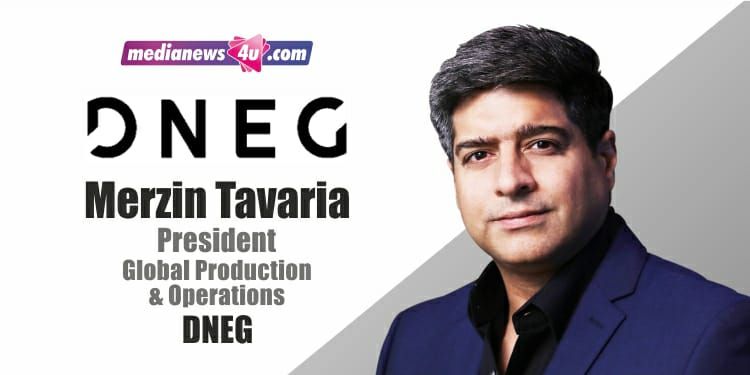Visual effects and animation studio DNEG entered India in 2014 through a partnership with Prime Focus. Today the company has a team of 7,000 professionals working from nine offices spread across four continents.
Merzin Tavaria, President, Global Production and Operations, DNEG, explains the growth in India and expansion plans.
From a headcount of over 1700 pre-pandemic, the team in India has over 2800 people today, he reveals.
“The pandemic had disrupted markets globally in 2020, and the short-term consequences were sudden and severe: Although it accelerated existing trends of remote working, it also propelled faster adoption of automation and AI, especially in the creative arena. Pandemic did induce a drop in hiring numbers as compared to 2019, we were around 1700+ pre-pandemic. However there has been an upswing since ‘21 and we are rapidly growing with 2800+ employees as of April 2022,” he explains.
The stated intent is to expand its footprint in India, from its current presence with four offices.
“An opportunity for expansion within India not only creates a space within the Indian VFX industry for more people with a passion for technology and filmmaking to join in but also creates an ecosystem for international artists and VFX experts within DNEG to join the Indian projects,” adds the spokesperson.
Internal transfers are also part of the work culture at DNEG, which help appreciate cross-cultural projects.
Tavaria notes, “We consider ourselves to be a worldwide company, and our India teams are collaborating on worldwide projects to produce outstanding visual effects and feature animation. During recent times around 200-odd employees from various domains have been deputed across locations to work in tandem with studios for both temporary as well as long-term phases.”
Indian Projects & Greater Adoption of VFX
While most of DNEG’s projects, which involve global teams including the one in India, are for Hollywood studios, it has been involved in some of the successful Asian shows in recent years.
Tavaria cites The Battle at Lake Chongjin as a collaboration with an Asian client, which went on to become the highest-grossing Chinese film of all time.
“VFX has grown leaps and bounds in the Indian film industry; this has provided us with immense opportunities to work on some exciting projects. One such project is Brahmastra, starring Ranbir Kapoor, Alia Bhatt, and Amitabh Bachchan,” notes the global production and operations head. Also in the pipeline are other films in production for the Indian market.
Recent global work from the company include The Matrix Resurrections, No Time to Die, and the Oscar-winner Dune.
There is greater adoption of VFX in India and an upward trend in production value and budgets, notes Tavaria.
The executive explains, “VFX has undoubtedly become an even more instrumental tool in the filmmaking process. There is an upward trend in production value or budgets. This is primarily due to broader international distribution in part to digital theatres. Secondly, writers and directors are more open to embracing scripts requiring VFX. Therefore, production companies are increasingly pursuing more ambitious projects that can only be fulfilled with the use of VFX. Moving forward, the adoption of virtual technologies is going to escalate even more. Virtual technologies are here to stay even when restrictions are eased worldwide.”
He surmises, ”It is expected that over the next five years, 20 to 25 percent of Indian studios would have adopted such technologies.”

















